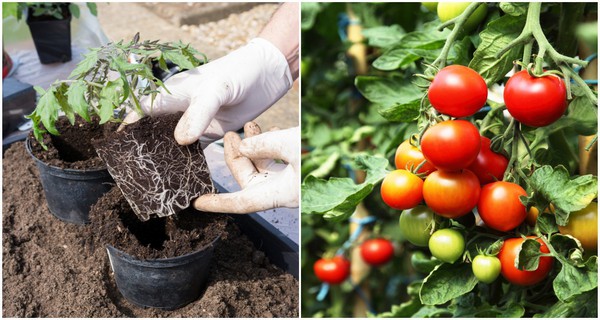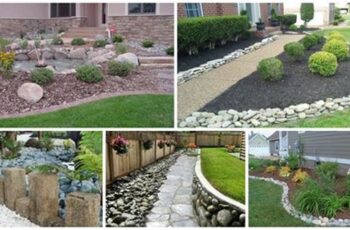Ad Blocker Detected
Our website is made possible by displaying online advertisements to our visitors. Please consider supporting us by disabling your ad blocker.

10-Deadly-Mistakes-To-Avoid-When-Growing-Tomatoes
Adopting proper pruning practices is essential for maintaining the health, vitality, and disease resistance of your plants. When it comes to pruning tomatoes, there is flexibility in your approach, and you can achieve successful tomato growth whether you choose to prune or not. However, if you decide to prune your tomato plants, it is important to be mindful of common pruning mistakes to avoid.
-
Don’t use dull pruners.
Using dull garden knives and pruners can impede the clean cutting of plant stems and potentially cause damage to your plants. Therefore, it is crucial to ensure that your shears are sharp before you begin pruning your tomatoes. Take the time to sharpen your garden tools, as this will enable you to make precise and clean cuts, promoting the overall health and well-being of your tomato plants.
-
Don’t use dirty pruners.
During the process of pruning, there is a risk of spreading plant diseases if proper precautions are not taken. To prevent the transmission of diseases between tomato plants, it is crucial to disinfect your gardening tools. A recommended method is to wipe down your pruners with 70 to 100% isopropyl alcohol between each plant. This simple practice helps ensure that any potential pathogens or contaminants are eliminated, safeguarding the health of your tomato plants and reducing the risk of disease spread.
-
Don’t prune wet plants.
Pruning tomato plants when they are wet poses a high risk of spreading tomato diseases. Therefore, it is crucial to wait until your tomato plants are dry before initiating any pruning activities. It is also important to avoid pruning your plants during rainy conditions. By ensuring that the plants are dry when pruning, you can minimize the chances of disease transmission and maintain the overall health and well-being of your tomato plants.
-
Don’t over-prune.
- It is crucial to avoid removing more than one-third of your plant’s foliage when pruning. Over-pruning is a common mistake that can have adverse effects on tomato plants. Excessive pruning can lead to excessive exposure of tomatoes to intense sunlight, resulting in sunscald. Moreover, over-pruning can cause stress to the plant, potentially leading to its demise. Removing too many leaves at once can also hinder the plant’s ability to photosynthesize, ultimately reducing the tomato harvest.
- When it comes to determinate tomatoes, pruning should be limited to removing lower leaves that come into contact with the ground and removing suckers below the first clusters of flowers. Over-pruning determinate tomatoes can significantly diminish the fruit production of the plants, which is not desirable for any gardener.
- It is important to strike a balance when pruning tomatoes, ensuring that you do not go overboard and maintain the plant’s overall health and productivity.
Propagating tomato cuttings
Here’s an interesting fact: Tomato plants can easily root from healthy pruned suckers!
Instead of discarding the tomato suckers after pruning, you can actually use them to propagate more tomato plants at no cost. Tomato suckers serve as a great resource for expanding your tomato garden.
To propagate tomato suckers, start by selecting a disease-free sucker that is approximately 6 inches long and does not have any flowers. Carefully cut the sucker from the plant using a sharp knife or pruners, and then trim the end of the sucker at a 45-degree angle.
Once the sucker is removed, you have two propagation options. The first option is to place the sucker in a clean jar of water, ensuring that the water is refreshed regularly. Keep the jar in bright, indirect light until the sucker develops roots.
Alternatively, you can place the tomato sucker in a nutrient-rich potting mix, ensuring that the mix remains consistently moist. To create a humid environment, you can cover the cutting with a clear plastic bag, preventing the soil from drying out too quickly. For even faster rooting, you can dip the tomato cutting in the rooting hormone before planting it in the soil.
Once the tomato suckers have developed roots, they can be transplanted into your garden and cared for like any other tomato plant. This method provides a quick and simple way to increase your tomato harvest, giving you even more incentive to prune your plants!
Frequently asked questions
When it comes to pruning tomatoes, the two primary areas of focus are the leaves near the ground and the suckers that develop in the crotches of branches and stems.
Lower leaves that come into contact with the soil are often pruned to minimize soil contact and reduce the risk of disease transmission. Removing these lower leaves helps maintain a cleaner and healthier growing environment for the tomato plants.
Suckers, on the other hand, refer to the shoots that emerge from the joint between branches and stems. These suckers can divert energy away from fruit production and result in excessive foliage growth. Pruning these suckers allows the plant to direct more energy towards developing fruits, leading to a better yield.
By targeting these specific areas for pruning, you can effectively manage your tomato plants and promote their overall health and productivity.
What happens if you don’t prune tomatoes?
Indeterminate tomatoes, when left unpruned, have a tendency to become unruly in the garden and occupy a significant amount of space. Additionally, the lower leaves of tomato plants are susceptible to diseases and pests. Consequently, it is generally advisable to remove these lower leaves.
By pruning indeterminate tomatoes and removing the lower leaves, you can help manage their growth and create a more organized and efficient garden space. This practice also mitigates the risk of disease and pest issues associated with the lower foliage. Taking these steps contributes to healthier tomato plants and a more productive and visually appealing garden environment.
What leaves do you remove from tomato plants?
To maintain the health and productivity of tomato plants, it is important to remove any leaves that come into contact with the ground. These leaves are at a higher risk of developing diseases and should be promptly clipped away. Additionally, both indeterminate and determinate tomato varieties benefit from the removal of suckers that sprout between the soil line and the first cluster of tomato flowers.
By carefully pruning these suckers, you can encourage better airflow and focus the plant’s energy on fruit production. Remember to regularly inspect your tomato plants for such leaves and suckers, and trim them away to promote optimal growth and minimize the risk of disease.
Can you over-prune tomatoes?
Over-pruning tomatoes is a prevalent issue that can lead to various complications. Removing an excessive number of leaves can impede the plant’s ability to undergo photosynthesis, negatively impacting its overall health.
Moreover, over-pruning can place undue stress on the plant, potentially affecting its growth and productivity. In hot climates, over-pruned tomatoes are particularly susceptible to sunscald since they have fewer leaves to shield the fruit from intense sunlight.
To ensure the well-being of your tomato plants, it is crucial to strike a balance when pruning. Avoid the temptation to remove an excessive amount of foliage, as this can hinder the plant’s ability to thrive and reduce its capacity for photosynthesis.
Additionally, be mindful of the specific needs of your tomato plants, particularly in hot climates, to minimize the risk of sunscald and maximize their chances of producing healthy and abundant fruit.
What are the disadvantages of pruning tomatoes?
Pruning tomatoes indeed requires effort and dedication, adding an extra task to your gardening routine. It is important to note that pruning can result in a reduction in the overall number of tomatoes your plants produce. However, the trade-off is that the tomatoes that do develop after pruning tend to be larger and sweeter in flavor.
Another crucial aspect to keep in mind when pruning tomatoes is the risk of spreading plant diseases. Failure to disinfect your pruners in between plants can potentially lead to the transmission of diseases while performing the pruning process.
While pruning may add to your gardening responsibilities, the benefits of improved fruit quality and disease prevention make it a worthwhile practice. By practicing proper pruning techniques and ensuring the disinfection of your pruning tools, you can enhance the overall health and productivity of your tomato plants.
Is it better to cage or trellis tomatoes?
Both indeterminate and determinate tomatoes can be effectively supported by tomato cages and trellises. However, the level of pruning required may vary depending on the support system chosen. Tomatoes grown in cages typically require less pruning, as the cage provides natural support for the plants. On the other hand, indeterminate tomatoes grown with stakes or other supports may need more pruning to ensure that their stems fit and are properly supported.
When selecting the ideal support system for your tomatoes, it is important to consider the pruning requirements associated with each option. Cages offer more natural support and may require minimal pruning, whereas stakes and other supports may necessitate more pruning to maintain the desired shape and size of the plants.
By considering your specific needs and preferences, you can choose the support system that best suits your gardening style and the growth habits of your tomato plants. This will ultimately contribute to healthier plants and more efficient use of space in your garden.
Summary
When it comes to pruning tomato plants, it’s perfectly fine to approach it with caution, especially if you’re new to the process. Pruning can initially seem daunting, but like any gardening task, it becomes easier with practice. If you’re a beginner, it’s advisable to start with a conservative approach and only trim a few tomato stems at a time.
By taking it slow, you’ll have the opportunity to observe the impact of pruning and make adjustments as needed. This approach minimizes the risk of over-pruning, allowing you to gain confidence and gradually refine your pruning skills.
Remember that there are numerous benefits to pruning tomatoes, such as reducing the occurrence of tomato diseases and promoting faster ripening in autumn. As you become more comfortable with pruning techniques, you’ll discover the advantages it brings to your tomato plants. So, don’t hesitate to give it a try and enjoy the rewards that come with well-pruned tomato plants.
[mashshare]

